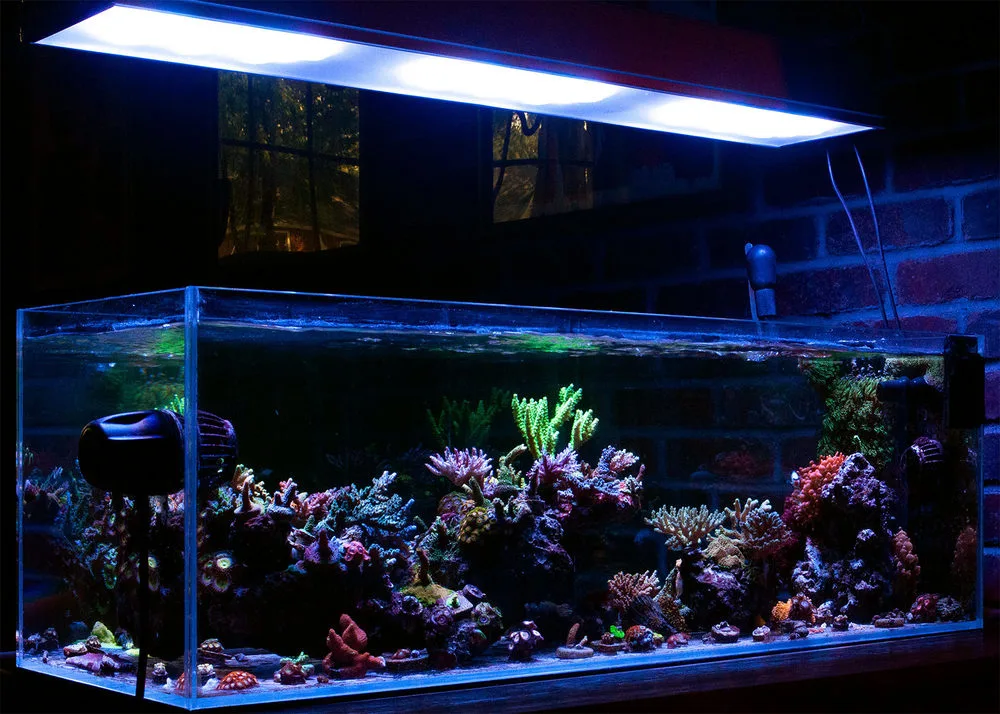Stunning 22-Gallon Reef Tank – YHSublime's TOTM | NanoReef

Tank Specifications
Volume: 22 Gallons / 83 Liters
Dimensions (L × W × H):
36.0" ×
12.0" ×
12.0"
91.4cm ×
30.5cm ×
30.5cm
Equipment List
- Salt: ESV
Frequently Asked Questions
How often should I clean the glass of my reef tank?
You should clean the glass whenever it appears dirty. Many reef hobbyists do this weekly or bi-weekly, but it can vary depending on the tank's algae growth and personal preference.
What is the recommended water change frequency for a reef tank?
A monthly water change of about 10-20% of the tank volume is common. This maintains water quality and replenishes trace elements.
What routine testing should I perform on my aquarium?
At a minimum, you should test alkalinity weekly and salinity regularly, especially if you are adding livestock or making changes to feeding or dosing.
How should I feed my reef tank inhabitants?
You can feed your fish and corals frozen food, like LRS blend. Defrost a chunk in saltwater and use a pipette to spot feed, ensuring food reaches both fish and corals.
How often should I feed my fish?
It's recommended to feed your fish once or twice a day, but make sure not to overfeed, as this can lead to water quality issues.
What types of corals can I keep in a nano reef tank?
You can keep a variety of corals, but beginners should start with soft corals and LPS, like zoanthids or acans. As you gain experience, you can add SPS corals.
What should I do if a coral dies in my tank?
It's essential to assess the reasons for the coral's death. Stop adding similar corals if you're unsuccessful, and focus on corals that thrive for you.
What filtration methods can I use for a reef tank?
While many tanks use protein skimmers, some like the author don't use one and rely on regular water changes, refugiums, and automated top-offs.
How should I set up my automatic top-off (ATO) system?
Ensure your ATO is set correctly with a reliable float switch and check the water reservoir regularly to prevent the system from running dry.
What is the best way to maintain water parameters in my reef tank?
Consistency is key. Regular testing and adjustments based on coral needs, along with maintaining a stable environment, will help achieve balanced water parameters.
How can I prepare for emergencies related to my tank equipment?
Having backup equipment, like extra pumps and heaters, along with a battery backup or generator, ensures you are ready in case of power outages or equipment failure.